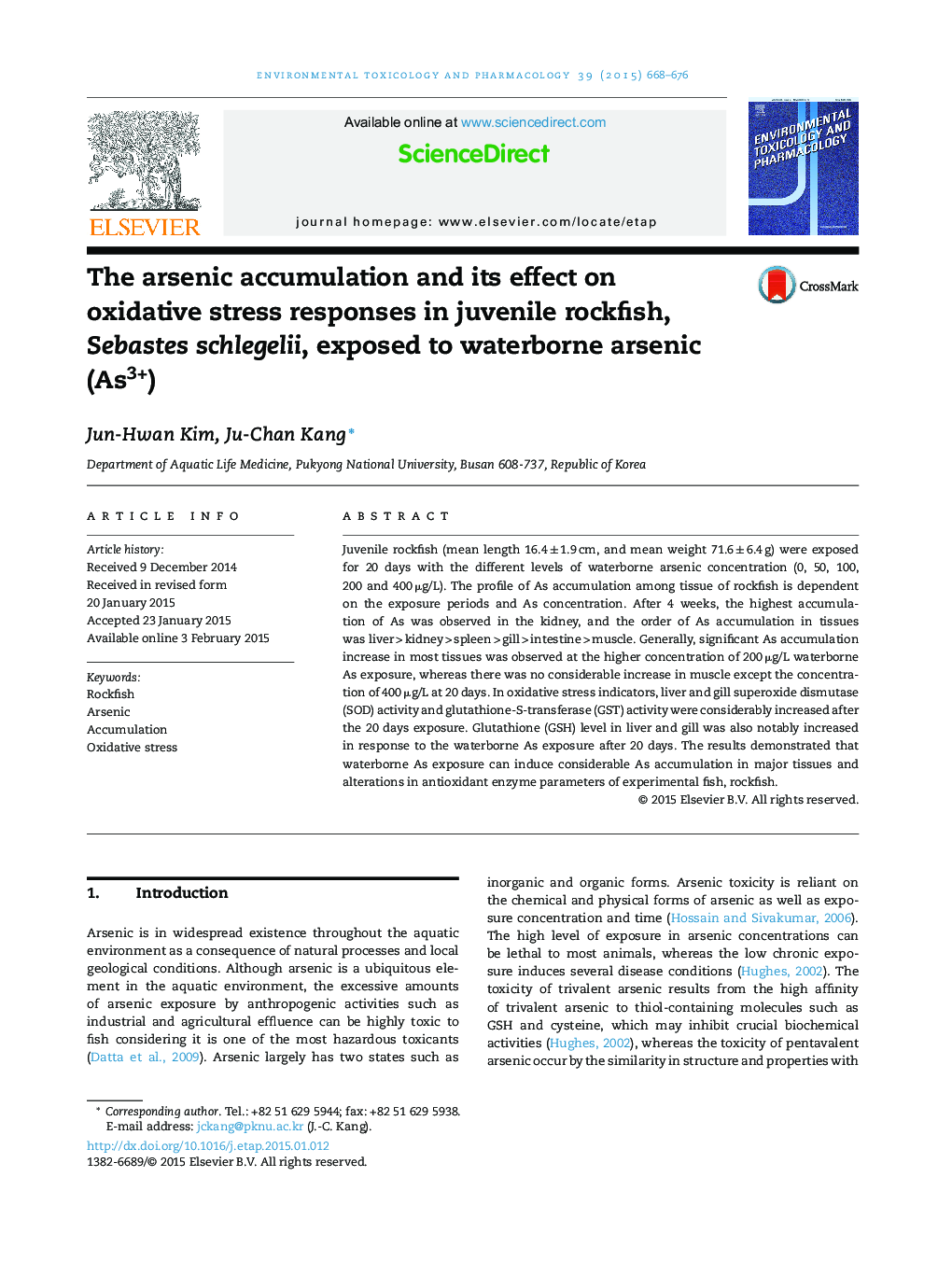| Article ID | Journal | Published Year | Pages | File Type |
|---|---|---|---|---|
| 5848813 | Environmental Toxicology and Pharmacology | 2015 | 9 Pages |
Abstract
Juvenile rockfish (mean length 16.4 ± 1.9 cm, and mean weight 71.6 ± 6.4 g) were exposed for 20 days with the different levels of waterborne arsenic concentration (0, 50, 100, 200 and 400 μg/L). The profile of As accumulation among tissue of rockfish is dependent on the exposure periods and As concentration. After 4 weeks, the highest accumulation of As was observed in the kidney, and the order of As accumulation in tissues was liver > kidney > spleen > gill > intestine > muscle. Generally, significant As accumulation increase in most tissues was observed at the higher concentration of 200 μg/L waterborne As exposure, whereas there was no considerable increase in muscle except the concentration of 400 μg/L at 20 days. In oxidative stress indicators, liver and gill superoxide dismutase (SOD) activity and glutathione-S-transferase (GST) activity were considerably increased after the 20 days exposure. Glutathione (GSH) level in liver and gill was also notably increased in response to the waterborne As exposure after 20 days. The results demonstrated that waterborne As exposure can induce considerable As accumulation in major tissues and alterations in antioxidant enzyme parameters of experimental fish, rockfish.
Related Topics
Life Sciences
Environmental Science
Health, Toxicology and Mutagenesis
Authors
Jun-Hwan Kim, Ju-Chan Kang,
